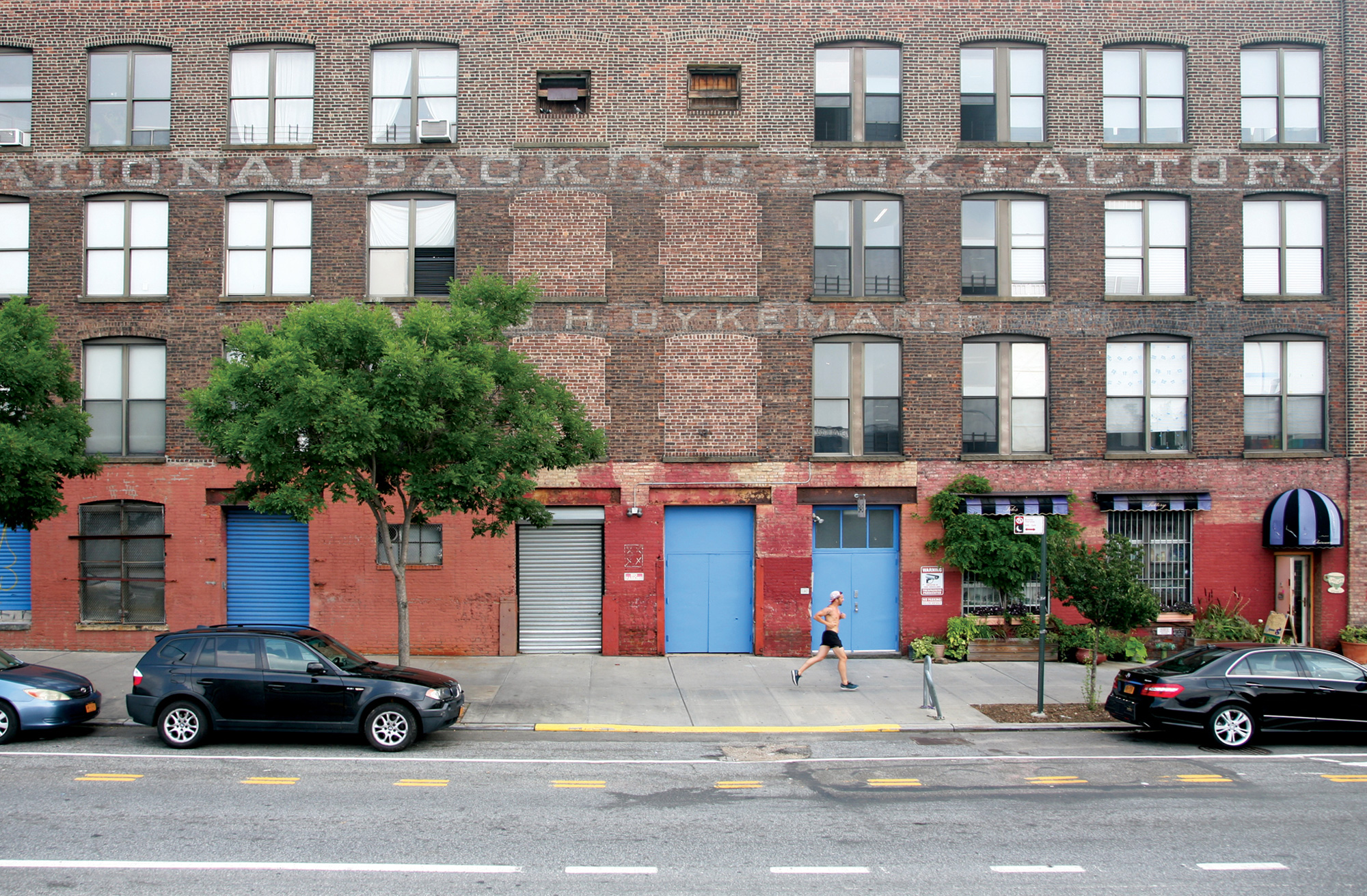Boxing in Brooklyn
Our borough’s mighty contributions to the packaging industry
Juli Brandano

The modern-day packaging industry can trace its origins back to nineteenth-century Brooklyn, where box factories dotted the landscape and a cardboard tycoon had an entire neighborhood named after him. From around 1900 to 1936, even the building alongside the Gowanus Canal that now houses Cabinet’s office was home to a wooden box company. Its name, The National Packing Box Factory, endures in washed-out white paint on the south facade of our building, along with the name of the company’s founder, James H. Dykeman.
Records conflict about the National Packing Box Factory’s initial location when it began operating in 1873. Some report that the company’s first address was near our office, on Union Street, which might explain why the firm’s original name was the Union Packing Box Factory; we do know, however, that by 1880 the factory had relocated to John Street in north Brooklyn, where it suffered a devastating fire in May of that year.[1] With $30,000 of insurance money, Dykeman moved back to the Gowanus area, to our block on Nevins Street. Proximity to the canal made the new site a perfect spot; the factory could use the waterway to transport lumber supplies and there was room for expansion.[2] Between 1899 and 1900, the company constructed our building on the northwest corner of Union and Nevins; the firm stayed here for nearly forty years.[3]
The only available photos of the factory workers from this time on Nevins Street are from a small trade magazine, The Disston Crucible, created by a Philadelphia-based saw company called Henry Disston & Sons. The Crucible’s primary purpose was one of self-advertising; each issue devoted a section to letters from satisfied customers, and articles, such as one from a 1916 issue, that bore titles like, “Any Saw Not of Superior Quality Would Have Been Torn to Ribbons.”[4]
The National Packing Box Factory was a proud supporter of Disston, and in 1914, National’s saw-filer, Guy W. Dyer, wrote in to the magazine to publicly extol the “toughness and flexibility” of their band saw.[5] In conjunction with the letter, the magazine published a short spotlight and a few photos of the men of the National factory, seen alongside their Disston saws. A year earlier, in 1913, Dykeman had died and been replaced by T. F. Fyfe. Under Fyfe, the company continued to be one of the “leading box makers in this vicinity,” according to the Crucible—though it would not remain that way for long.[6]
In the 1920s, the success of the company waned, and as a result, the owners decided to rent out parts of the property to other manufacturing businesses. In the early 1920s, for example, our cabinetmaking predecessors moved in: The Nightingale Phono Cabinet Company, specializing in quality wooden cabinets for phonographs and records.[7] After a slow decline, the National Packing Box Factory was hit hard in 1932, when a fire decimated much of the back part of the building, blazing for at least two hours and injuring two